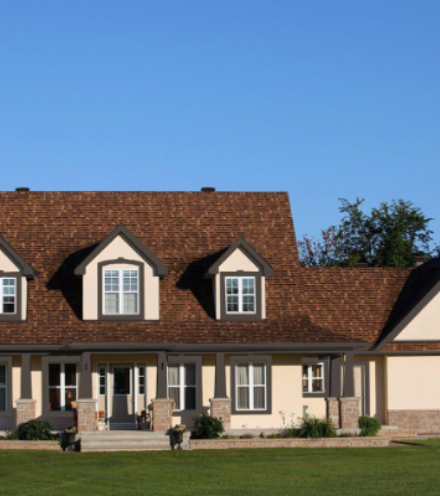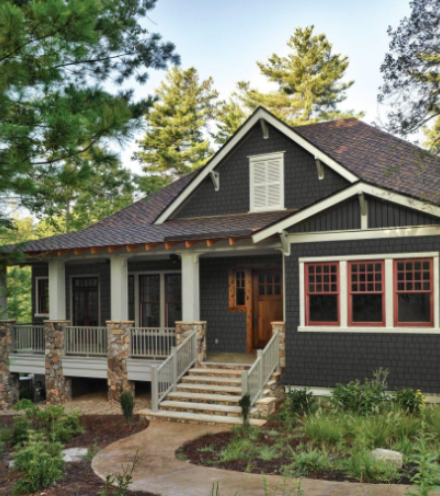The American Craftsman is an iconic set of styles that helped shape mid-century architecture. There are four basic Craftsman styles - the Prairie, Four-Square, Bungalow, and Mission, with the Bungalow being the most common.
Part of what makes the Craftsman unique and sets it apart from other home styles is the care and attention to detail used throughout the space. Craftsmen are not known for being large, but they are well known for how well laid out and functional the space is. High-quality materials are used inside and out, and every decision made for the property is done with care to ensure the best possible outcome for style, function, and longevity.
While most Craftsman homes were originally sided with wood, and a few with mixtures of brick, fieldstone, and wood, many of them are now in need of an update. High-quality materials used during their production have led to the lasting nature of the homes, but these materials often need a lot of maintenance and care - something that’s in short supply in our modern age.
Therefore, when it’s time to re-side a Craftsman, wood might be the first thing that’s considered, but it isn’t necessarily the best material for the home or the homeowner. Craftsman owners hoping to maintain the integrity of their home, while lowering their maintenance needs, may want to consider fiber cement siding instead.
Identifying Features of a Craftsman Home
Craftsman homes were originally built from designs made by Gustav Stickley, which were in response to the Arts and Crafts movement in the late 19th and early 20th century. He wanted these functional and popular styles to be accessible to anyone who wanted a high quality, well laid out home.
The designs strove to put function first, so they included a lot of little details that are what people now use to identify these styles of home. Most Craftsman homes had low pitched rooflines and low, overhanging eaves. The front porch was usually covered and had pillars on either side of the entrance.
Inside, the fireplace was a prominent feature, and there was frequently a lot of built-in storage, including shelving, cabinets, and window seats at the dormer windows. Natural materials, particularly wood, were used both inside and outside the home.
Updating Craftsman Exteriors
Each Craftsman home has its own unique style, and even within a style, most Craftsman homes are unique, because each was usually built by the owner to their particular tastes and needs.
Prairie style homes often have a more contemporary looking exterior, using panels or stucco rather than plank siding. Bungalows often use shingles, rather than lap siding, while Mission styles usually feature board-and-batten siding.
These were only rules of thumb, however, as the Craftsman can also feature clapboard, shiplap, and decorative forms of the siding as well.
The key to successfully updating the exterior of a Craftsman home is to make sure that you’re following the original architectural style. This means replicating the look and using similar styles to the original plan.
If the home originally sported board-and-batten siding, then replacing that with the same style will give your home the most authentic appearance.
One of the reasons fiber cement siding is such a great choice for Craftsman-style homes is that it can easily replicate the original designs. Architectural panels are ideal for use on Prairie-style homes, while fiber cement cedar-look shingles come in a wide range of styles, including decorative options like octagonal or half-rounded shapes.
Craftsman homes also had very specific color palettes that often drew from nature. Fiber cement siding not only comes in numerous colors, including many that fit in well with the Craftsman color palette, but it can also be purchased primed and ready to be painted in any specific colors your home may need.
Fiber cement siding looks like wood when installed, but can go longer with less maintenance than wood. It’s fade resistant, so it’s less likely to require scraping and painting as often as wood. This lets you enjoy your home more and worry about it less.
Material Quality
This architectural style gets its name in part from each home being built by a “craftsman” or an expert in their field. The best possible materials, often sourced locally, were used throughout the inside and outside of each home. Care was taken with every aspect, which is why you’ll often see small details like built-in shelving and seating, elaborate exterior trim, and front doors that feature inlaid glass.
Using fiber cement siding on a Craftsman-style home is right in line with these principles. Fiber cement is also a high-quality material, made with a mixture of cellulose fiber, Portland cement, sand, and silica. This makes the material heavy and dense, as well as rot-resistant.
Fiber cement also resists insect activity as well as flames. It can be installed in all climates, and with the many styles available, it can easily fit in with various neighborhoods and architectural styles.
All of this means that your Craftsman home is getting a new exterior that is just as high in quality and can be given the same attention to detail as the original design.
Consider Residing Your Craftsman with Fiber Cement
Whether you have a Prairie, Four-Square, Mission, or Bungalow, your Craftsman home is filled with interesting features, quality workmanship, and character. Make sure you match all of that when it comes time to re-side your home by utilizing stylish, durable fiber cement siding. From architectural panels to irregular cedar-look siding, fiber cement siding is available to complete your ideal Craftsman design.
Consider fiber cement siding from Allura and obtain the quality and workmanship your Craftsman deserves.




